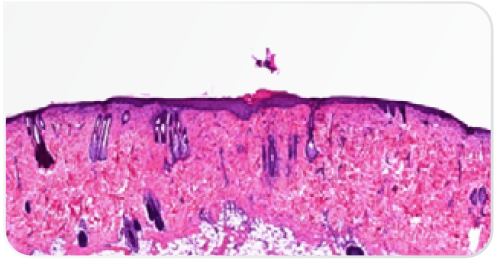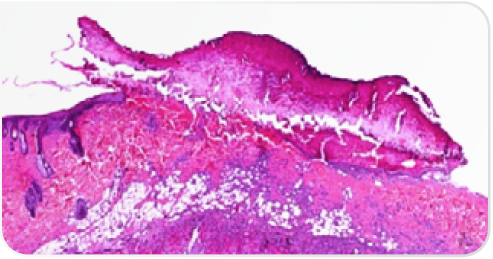Radiofrequency

This is shown by a study analyzing the healing process of lesions in albino rats created by different technologies. Using the impedance-controlled CURIS 4 MHz radiofrequency generator turned out to be more targeted and precise compared to conventional high frequency, preserving the basal membrane as well as the deep layers of the epithelium, thus causing less profound wounds.1
The histological assessment also showed that wound healing using the CURIS 4 MHz radiofrequency generator is faster compared to conventional high frequency. Radiofrequency induced wounds show complete epithelialization after seven days in contrast to the lesions produced by high frequency which show abundant inflammation associated with focal suppurations (see fig. 1).


Fig. 1: Histological aspects on day seven: comparing radiofrequency and conventional high frequency
Find out more information in the Application Report:
; height: auto; },
(min-width: 501px) { src: url(https://www.sutter-med.de/chameleon/mediapool/thumbs/5/79/did-you-know-teaser_800x480-ID5537-f80553adfa730e7d272fd9f51e18ab4d.png); height: auto; },
(min-width: 801px) { src: url(https://www.sutter-med.de/chameleon/mediapool/5/79/did-you-know-teaser_id5537.png); height: auto; }
)
With the impedance-controlled CURIS 4 MHz radiofrequency generator, Sutter offers the advantages of an advanced 4 MHz radiofrequency technology: Minimal lateral thermal damage, better wound healing and focused coagulation at low temperatures make the CURIS 4 MHz radiofrequency generator an optimal precision tool for a variety of applications. Find out more about the advantages of the 4 MHz radiofrequency technology, as seen in various studies.
Learn more and download the full PDF of our brochure:
Advantages of Impedance-Controlled 4 MHz Radiofrequency [1,2 MB]
1 Muehlfay G et al. A study of the type of lesions achieved by three electrosurgical methods and their way of healing. Rom J Morphol Embryol, 2015.
Product availability is subject to regulatory approval in individual markets. Products may therefore not be available in all markets.